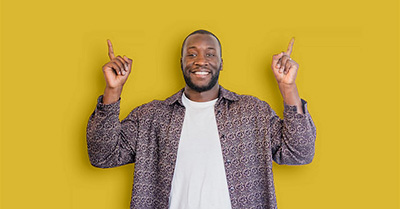Personal Pronouns (Objective Case) | (A-Level, Basic)
Summary: Subject - Object
| Person |
Singular |
Plural |
| First |
I – me |
we – us |
| Second |
you – you |
you – you |
| Third |
he – him
she – her
it – it |
they – them |
This lesson has exercises.
First, Second, and Third Person Singular and Plural
In grammar, pronouns are called first, second, and third person. The pronouns can also be singular (one person or thing) or plural (two or more people or things).
Object of a Verb
You use the objective case of personal pronouns after a verb. The object receives the effect of the verb.
Examples: First Person
Singular
The teacher likes me
Can you see me?
Please give me the book.
Plural
The teacher likes us.
Can you see us?
Please give us the book.
Examples: Second Person
Singular and Plural
The teacher likes you
Can the teacher see you?
I am going to give you the book.

Mart Production | Pexels
Note. You understand when “you” is singular or plural from the context.
Examples: Third Person
Singular
This is John. I know him from school.
Mary is over there. Can you see her?
Here’s the book. Please give it to John.
Plural
John and Mary? I know them from school.
Those are my parents. Can you see them?
Here are the books. Please give them to John.
Object of a Preposition
The objective case of the pronoun is also used as the object of a preposition.
Examples: Object of the preposition
Please give the book to me.
— Do you like this song?
— Yes, I listen to it every day.
Your parents are here. You can go with them now.
— Are you going to the party?
— I don’t know. I want to talk to you about it first. (about the party)
Subjective Pronoun without a Verb
If someone asks, “Who is going to the party?” you can answer, “I am!" or “I!”. Saying “I!” does not sound natural. Most people say ”Me!”
In this example, the subjective pronoun (I, he, she) is grammatically correct, but you use the objective pronoun, ”Me!”, because the pronoun does not have the verb after it.
Examples: Subjective pronoun without a verb
— Who are your parents in this picture?
— Them. (or They are.)
— Who’s there?
— Me! (or: I am!)
— Who’s there?
— It’s me!
(”It’s I” is correct, but it sounds a little unnatural in conversational English.)

Antoni Shkraba Production | Pexels
— Who is going with you?
— Him and her. (or He and she are.)
Practice
Practice 1. Fill in the blanks with the correct objective personal pronouns.
Practice 2. Fill in the blanks with the correct objective personal pronouns.
Practice 3. Write sentences using objective personal pronouns.
Congratulations on completing this lesson!

Thanks to our supporters!
This material has been made possible by supporters like you. Learn how you can support us.

“What should I learn next?”
Learn about possessive determiners or use the navigation buttons to choose another skill or another lesson in this skill.
Thank you for Supporting Snap Language
Snap Language supporters make the creation of these materials possible.
Learn how you can support our work, get perks, and help us continue creating high-quality materials.
You can support us by simply white-listing this site.